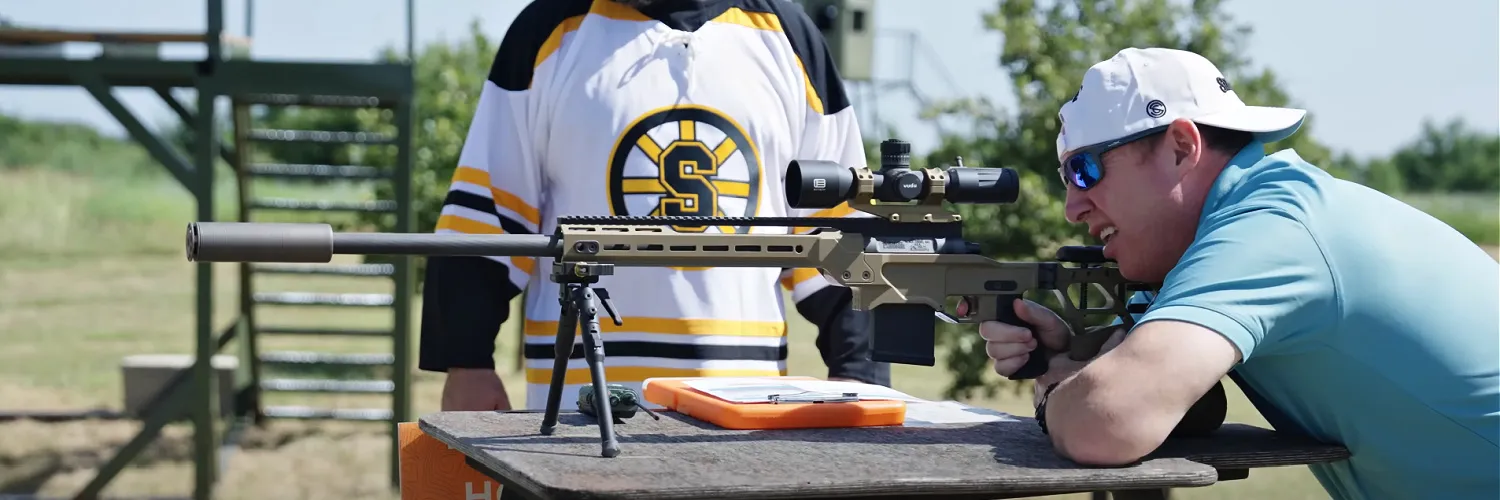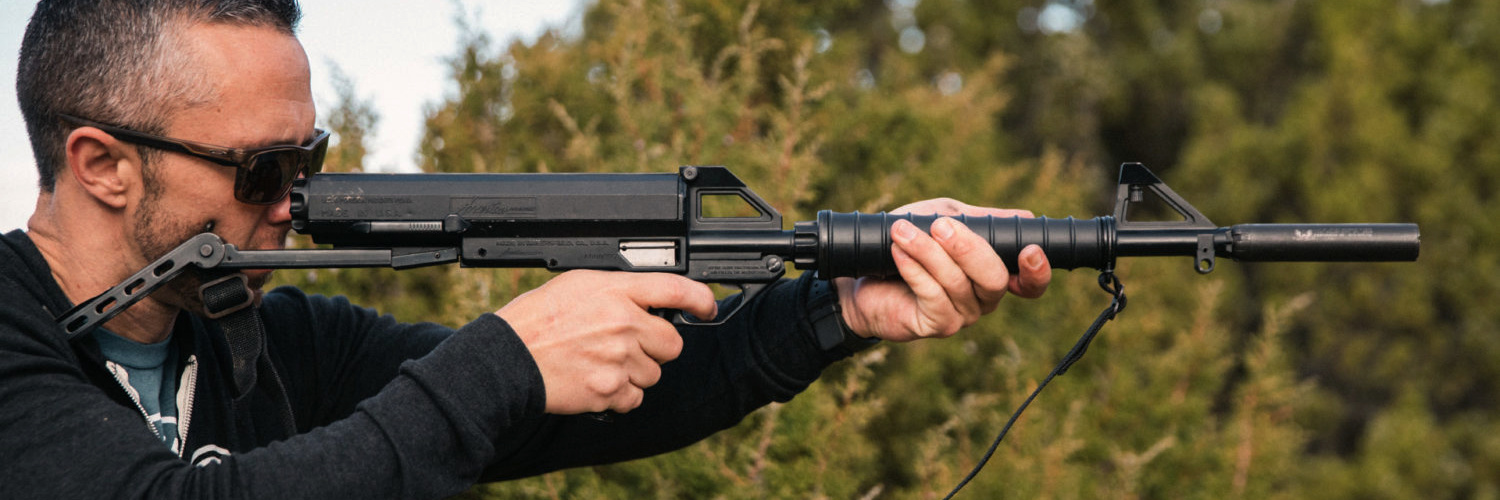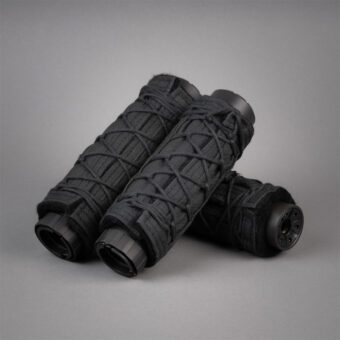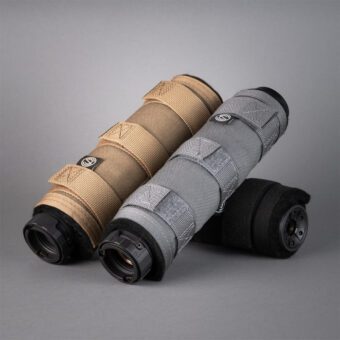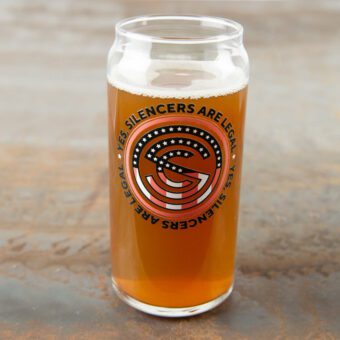Scythe® Ti: My Go-To Hunting Suppressor
David Higginbotham
The Scythe® Ti marks an innovative new direction in suppressor design for SilencerCo. The .30 caliber silencer is built entirely from titanium, is exceptionally light, and provides a robust level of noise reduction — in fact this short can cuts noise as well or better than many longer suppressors.
All About the Scythe® Ti
Several unique aspects of the Scythe® Ti come together to make one of the most effective suppressors I’ve ever used.
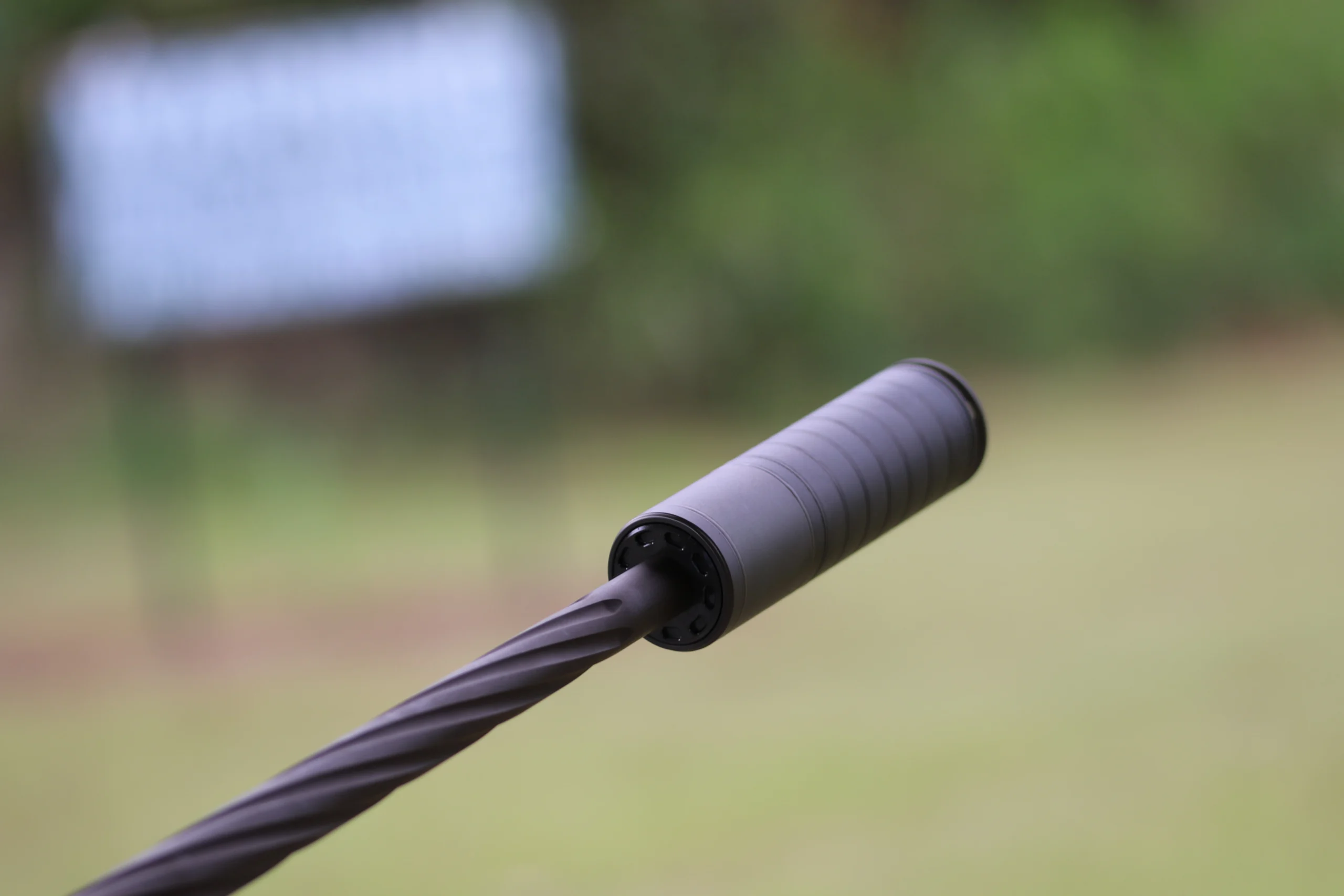
How the Scythe® Ti Is Made
Titanium. It is in the name.
I’m beginning here because I think it is worth noting. When you pick up a Scythe® for the first time — and I’ve watched many people do this — it feels too light. Almost impossibly light. Getting a suppressor this light is a milestone in engineering achievement.
Ti isn’t an easy metal to work with. First, it is a brittle element that must be highly refined to become usable. Part of the challenge begins well before SilencerCo gets their billets. Most of this is wrapped up in how titanium bonds to itself and under what exacting temperature and atmospheric conditions. Any oxidization prevents proper molecular bonds.
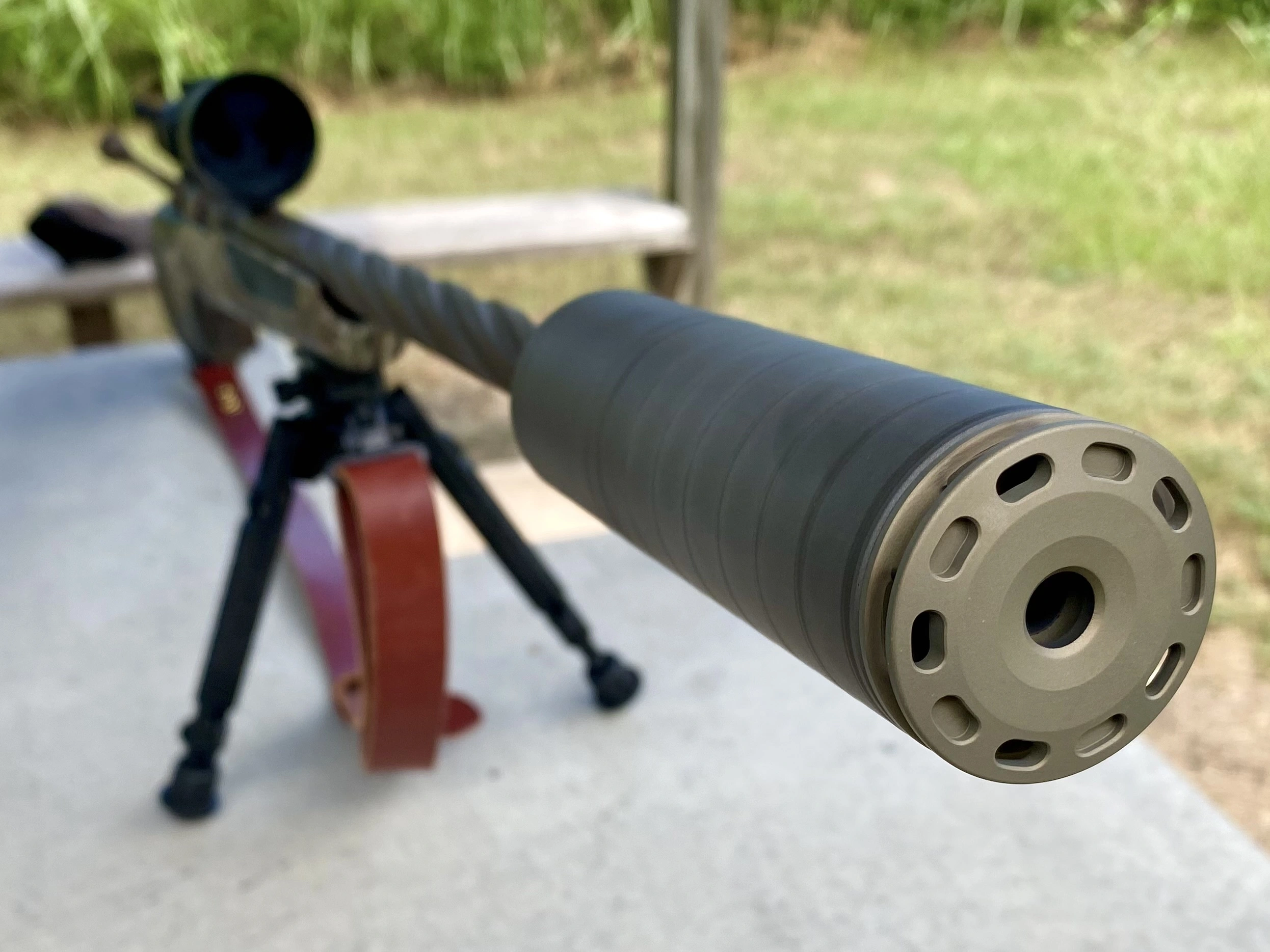
The resulting Ti is alloyed with vanadium and aluminum to make it behave more predictably. As Ti is harder on tools than steel, and prone to warping, working temperatures have to be closely controlled, and these alloys provide heat resistance and stability.
SilencerCo uses grade 5 titanium for the alloy’s inherent strength. Grade 9 alloy is used where the workability takes precedence (grade 9 can be worked cold). The pairing of the two alloys is what makes an all-titanium suppressor possible.
Titanium is heavier than aluminum, but stronger. Titanium is lighter than steel. Even so, if used indiscriminately, titanium can still add weight to a silencer. SilencerCo has designed the Scythe® so that it uses the inherent strength of the material. The baffles, eight of them, are milled, stacked, then aligned and welded. By sealing the stack, the need for an outer sleeve is eliminated.

How strong is the design? There are no barrel restrictions on the Scythe® Ti. This suppressor can take the punch from a short-barreled rifle’s fireball, no problem. And there’s not a .30 caliber cartridge for which the can isn’t approved. Strength, even from this minimalist suppressor, is a given.
The Scythe®, though, isn’t rated for full-auto fire. My guess is that this is related to how fast the entire suppressor would heat up during long bursts. That heat transference could potentially transfer into the mount, where rapid expansion might prove problematic. Every full-auto rated suppressor design I’ve worked with has more mass, allowing for more even heat distribution.
The Unique Look of the Scythe® Ti
The look of the Scythe® comes from the exposed titanium, its weld rings, and the single anchor brake on the front end — a look which is echoed in the pattern on the back of the suppressor. The front caps are removable and SilencerCo offers a few different designs sold separately.
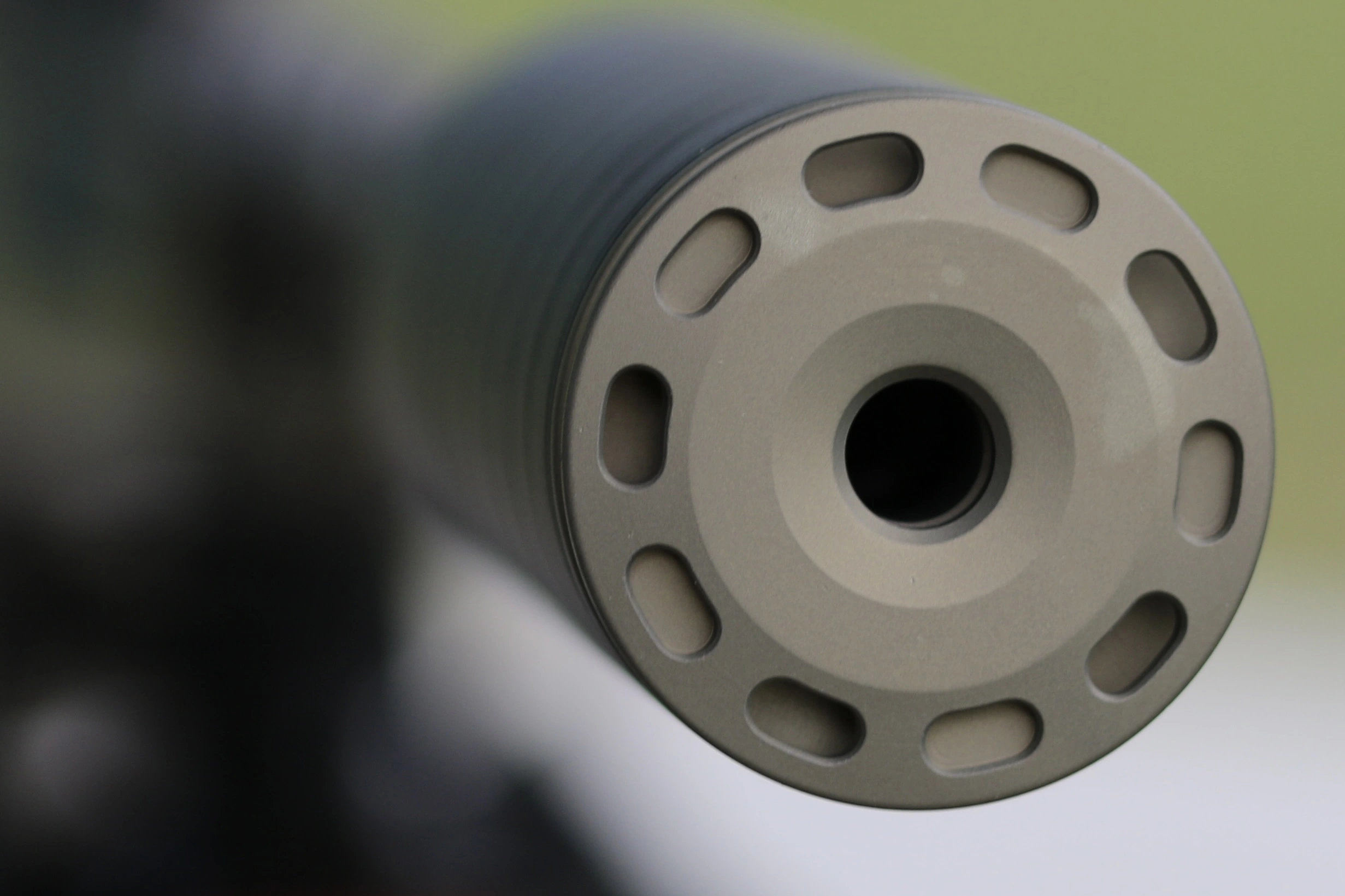
In the finishing stages, each suppressor is anodized. While some suppressors have slick, polished exteriors, the Scythe® has a rough feel — much like 600 grit sandpaper. The exterior is oiled, too. When I first heard this, I expected there to be a slippery feel, but there’s not. There’s no oily feel or burning off of oil in the field when it gets hot.
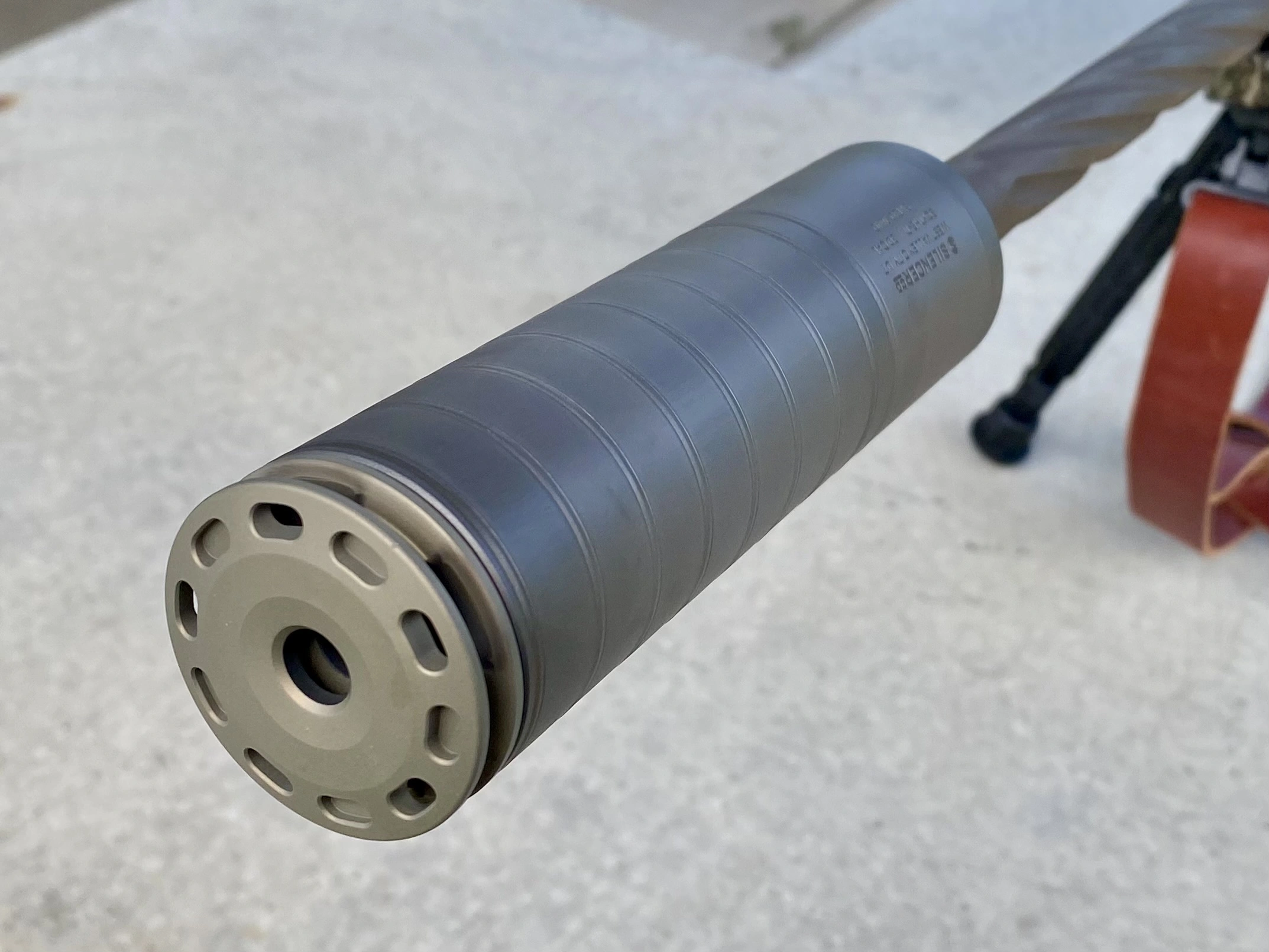
What's the Scythe® Ti Made For?
The Scythe® Ti is ideal for hunting, but to be clear — there’s nothing about the Scythe® that means it is only useful for hunting. While it isn’t rated for full-auto fire, it would be an excellent choice for precision shooting, plinking, and tactical applications, too.
Its short length makes it a good choice for anything that needs to be compact. I’ve run this now on a .223, on a couple of different 6.5 Creedmoors, and on .308s. It has proved consistent across each platform.
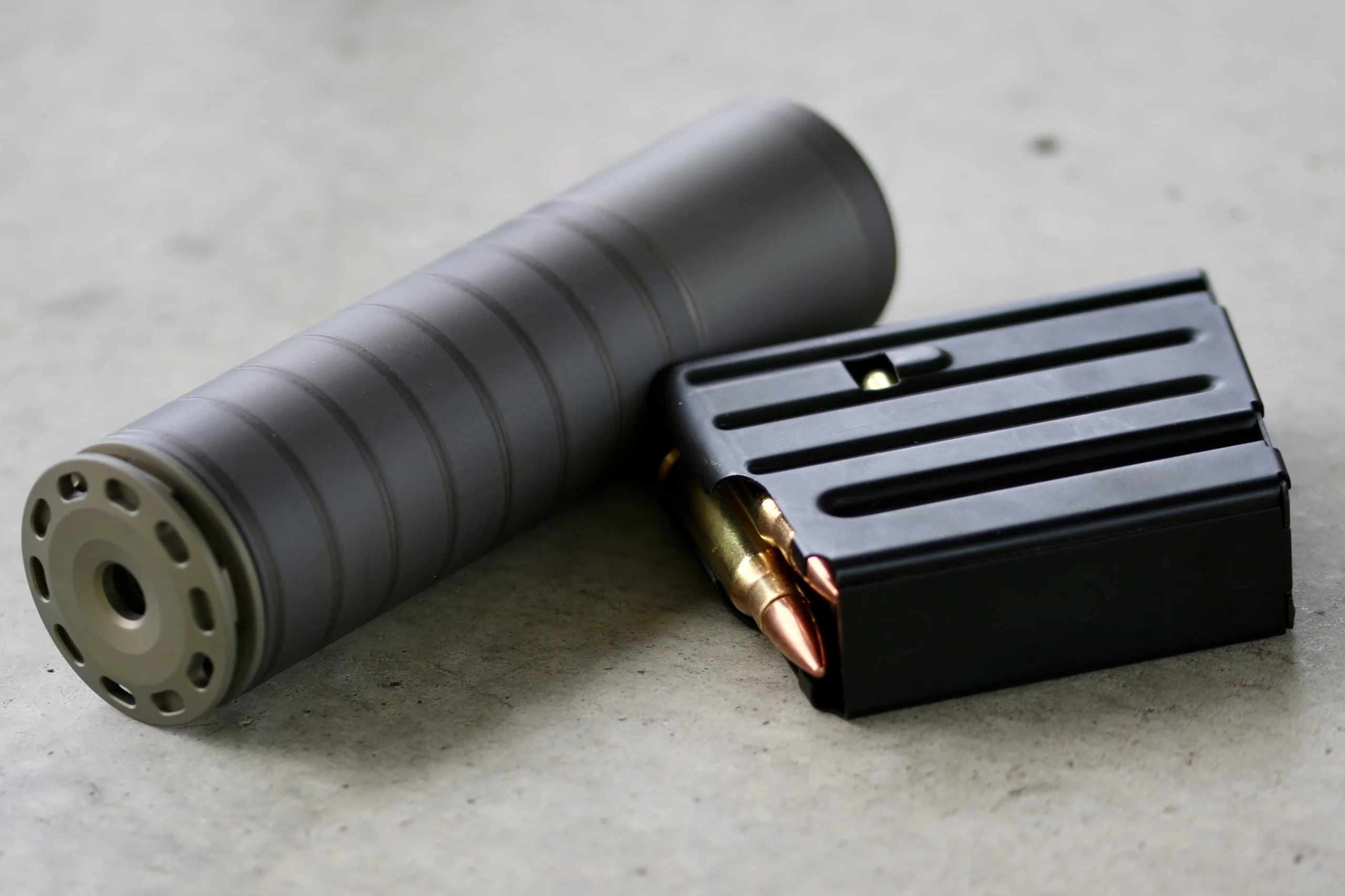
The look of the suppressor, for me, is never a factor. While I’ve been drawn to certain guns because of their aesthetics, I’m far more likely to judge a suppressor with a different set of senses. I want the quietest suppressor possible.
That said, there are times, though, when other factors take precedence. Over the last 15 years, I’ve been on a quest for the ideal suppressor for hunting. My requirements are easy. I want the suppressor to be as light as possible. The use of space should be efficient. Compact is key. And the noise reduction must be sufficient to bring a hypersonic round down to levels that don’t require active or passive hearing protection.
Searching for the right suppressor isn’t easy. I like to shoot them, first. That’s not always an option. If you buy a new gun and don’t like it, you can resell it easily enough. While it is possible to resell a suppressor, few do — mainly because you end up losing out on the $200 for the tax stamp, at least.
You can get your hands on them, though, in some bigger gun stores. And I was struck by how light the Scythe® Ti is. It is so light, in fact, that I was dubious about the noise reduction claims.
My favorite hunting rifle is a Savage 110 High Country. It isn’t the lightest Model 110, but it is easy enough to carry over long distances. When I picked up my Scythe® Ti, I screwed it onto the barrel with a direct thread mount and sighted it in.
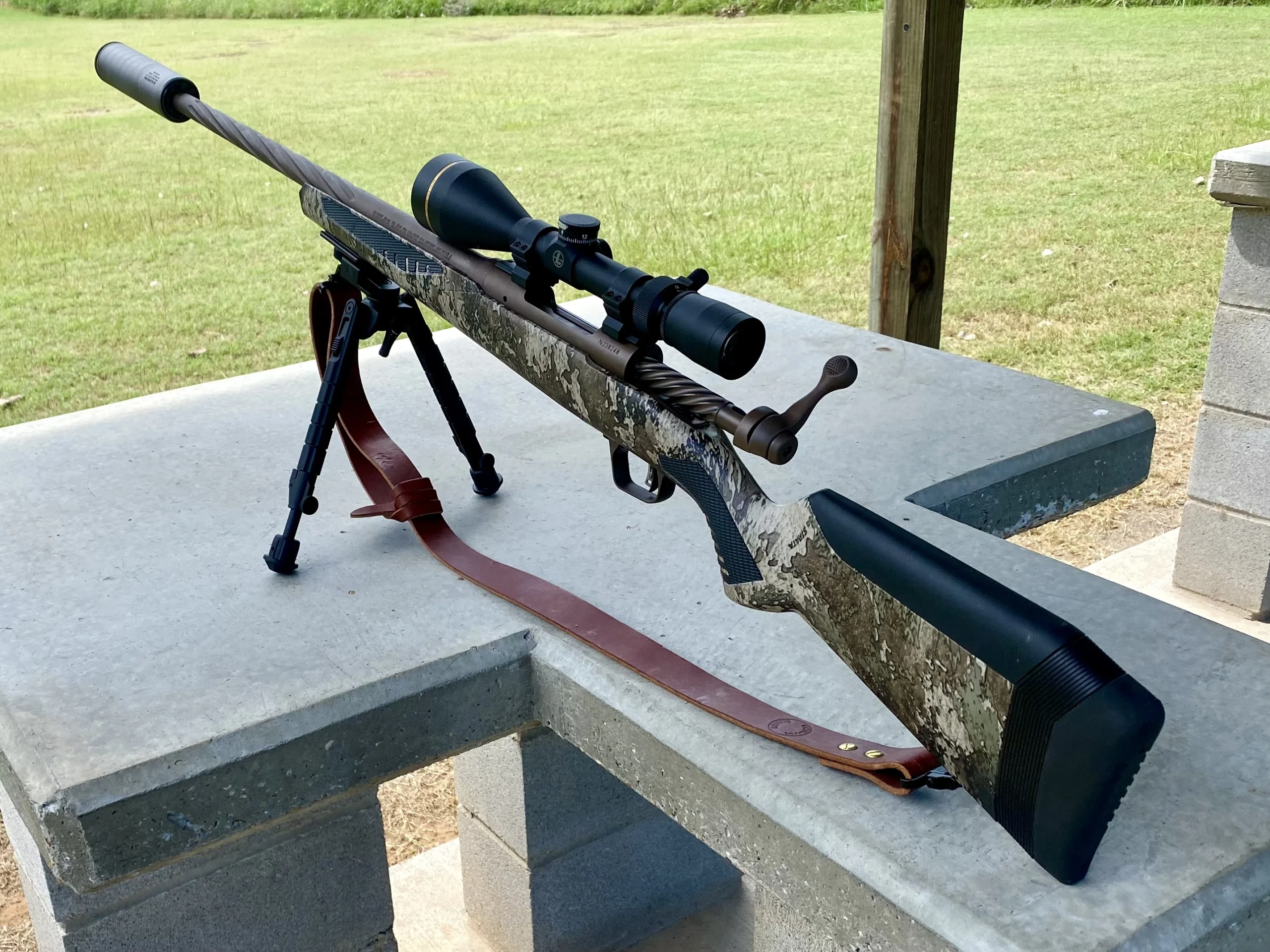
I’m just wrapping up my first whitetail season, and I’m thrilled with how well it works. The High Country has a 22” barrel. The Scythe® Ti brings that length out to almost 28” and adds half a pound to the gun. Both additions are easy enough to manage.
I’ve hunted this fall in Arkansas. The brakes in western part of the state are made of scrub oaks and cedars. They’re unforgiving and moving through them with any kind of long gun is cumbersome. In years past, I’ve unscrewed suppressors out of frustration, but the Scythe® isn’t long enough to get in the way (or at least not yet).
Mounting the Scythe® Ti
My Savage is chambered in .308. SilencerCo’s testing shows a 175gr .308 from a 20” barrel registering 132.6 dB at the muzzle. That’s well within the hearing safe rage, and impressive for a can that measures under six inches.
I’ve opted for direct mounting with the Scythe®. The end cap unscrews so that you can get the dedicated thread pitch needed. Direct thread mounts are available cut from either steel or titanium.
Bravo ASR mounts are also a solid option. I move suppressors from gun-to-gun frequently as I work on other gun reviews and projects. The ASR mounts are quick and lock firmly in place. On the barrel-side of these mounts, SilencerCo makes a variety of brake designs that allow you to have both a protected muzzle and recoil mitigation when the suppressor isn’t on the rifle.
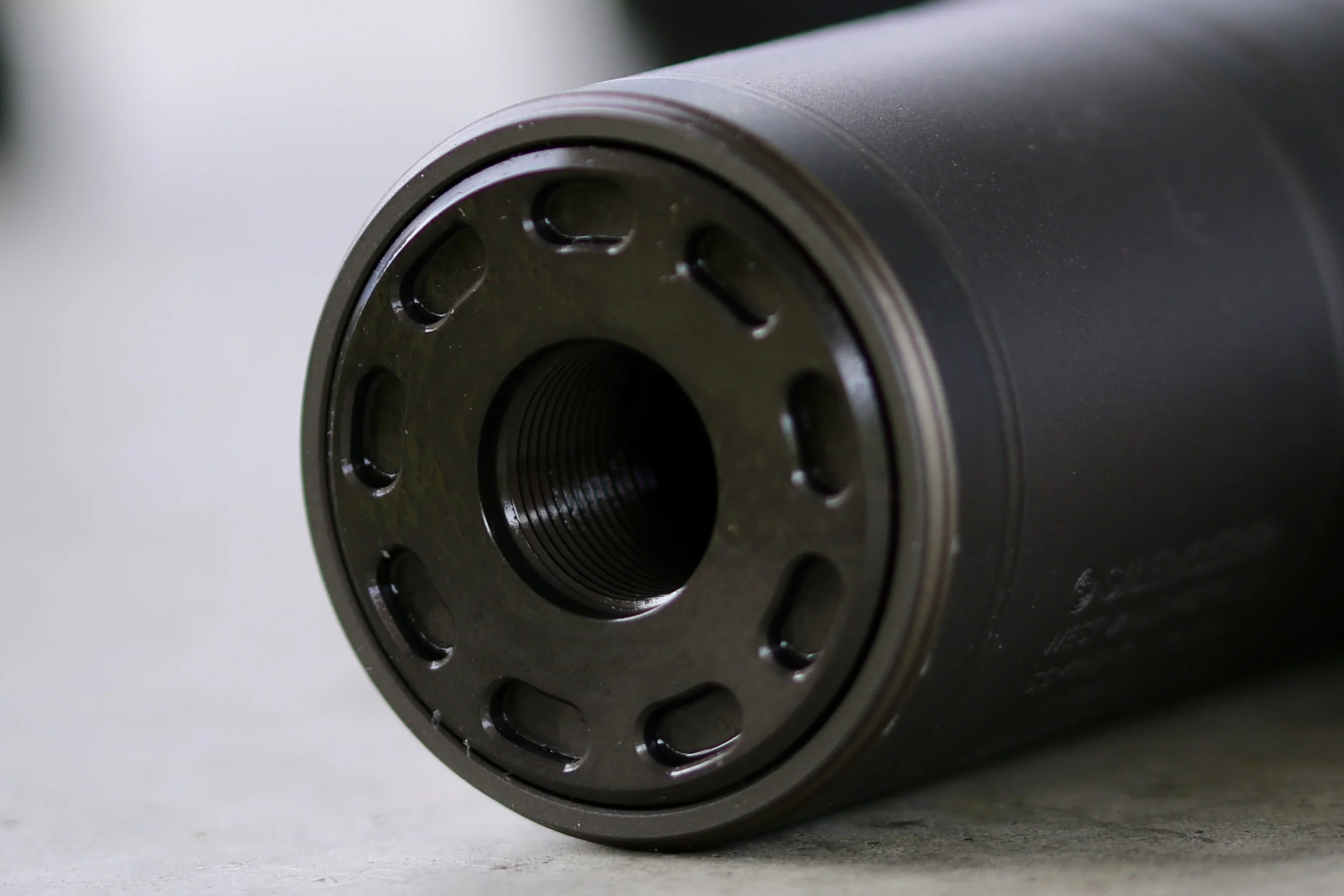
Conclusion
Lightweight, strong, and efficient — the Scythe® Ti is a minimalist can that delivers exceptional performance without compromise. SilencerCo set out to create a game-changer with the Scythe® Ti, and they’ve succeeded.


